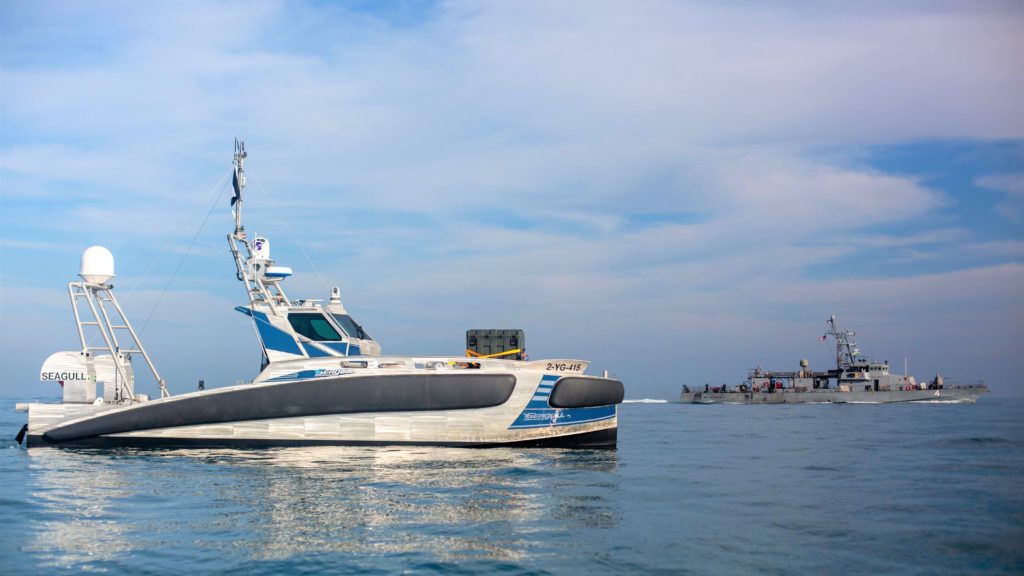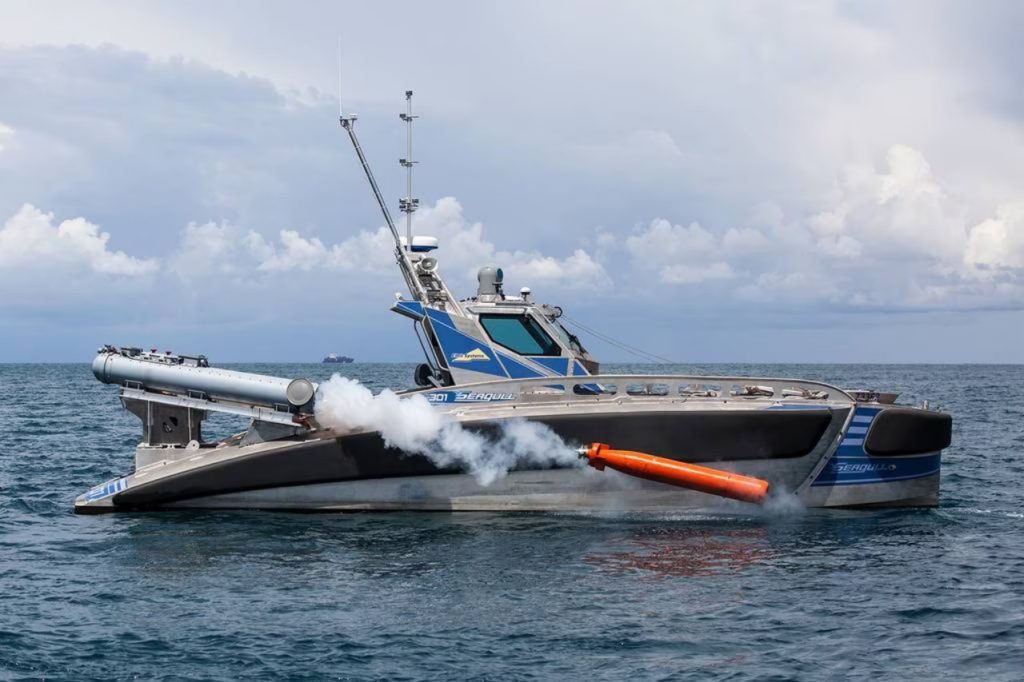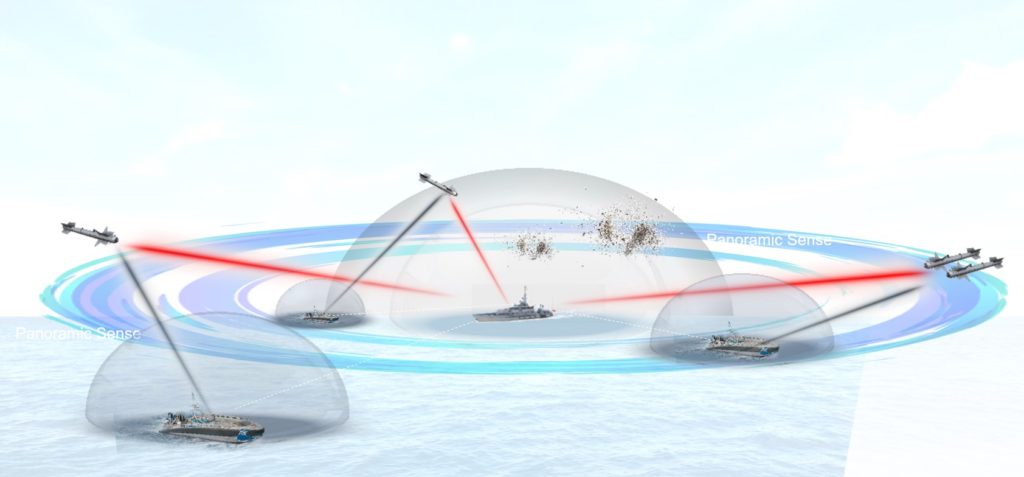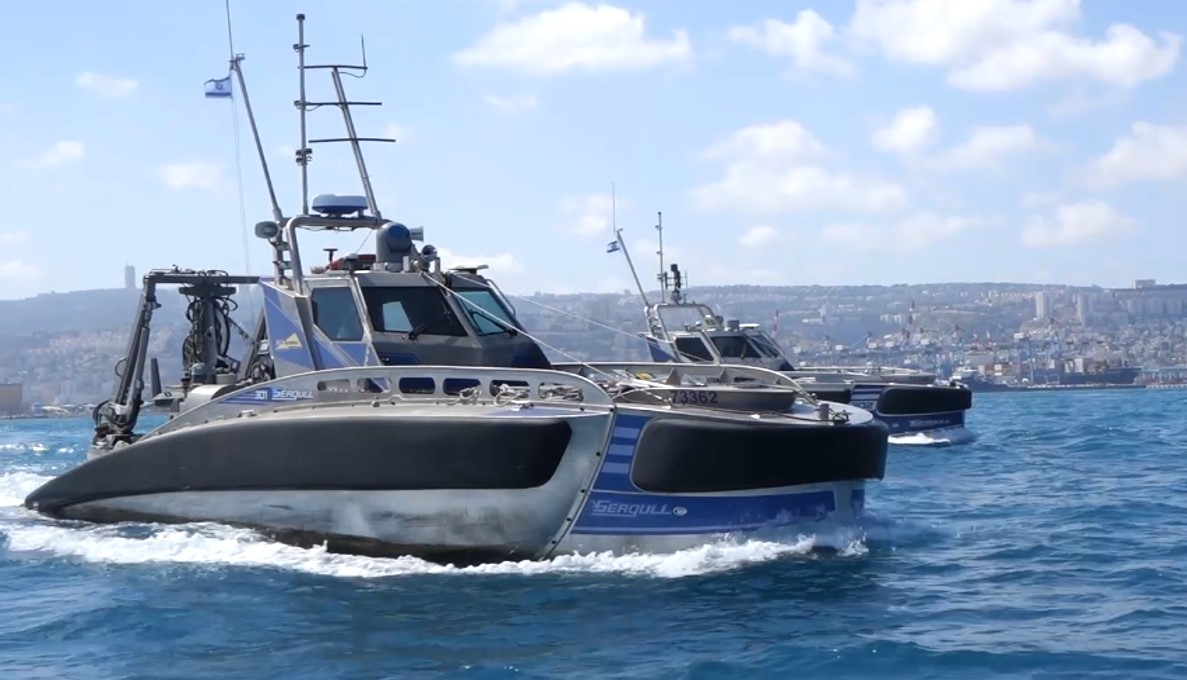Driven by the findings from current war and crisis zones, the use of unmanned, autonomous systems opens up a new dimension in tactical operational command. Unmanned surface vehicles (USV) can be used not only on land and in the air, but also at sea, for example to protect coastal sea areas, highly frequented shipping transit routes or critical infrastructure.
One of the most technically advanced systems of this type is the SEAGULL USV from the international defense company Elbit Systems Ltd. The second, more powerful system generation was recently successfully tested by the US Navy in current scenarios as part of the Digital Horizon exercise. SEAGULL’s unique concept of using modular system components to offer a USV that can be quickly converted for use in a variety of tactical operations and roles has met with great interest from naval forces, border guards and police forces throughout Europe. “The SEAGULL system can make full use of its flexibility, especially with regard to the highly endangered and highly dynamic operations in the Baltic Sea region. The SEAGULL is particularly suitable for protecting critical infrastructure on a 24/7/365 basis, for unmanned sea minesweeping and seabed warfare, for anti-submarine defense near the coast, for fleet protection as a carrier of sensor technology for electronic warfare and for creating a forward protection perimeter for fleet formations,” explains Tobias Willuhn, VP of the ISTAR EW business unit at Elbit Systems Germany.

Mine clearance, highly efficient and from a safe distance
The SEAGULL system consists of a 13 m long platform that can be operated manned or unmanned and can be adapted to different missions with the help of special mission kits. For example, the SEAGULL, equipped with hull, towed or dipping sonar, can detect foreign objects under water and then have them classified by a second system with a so-called ROV (Remotely Operated Vehicle) with video payload and cleared using a detonator – while the personnel controlling the entire process are at a safe distance at the consoles. Full and unmanned operation was already reliably demonstrated in 2022 during an exercise in the North Sea under difficult conditions.
Compared to conventional sea mine clearance using the methods commonly used by the German armed forces, an equally large sea area can be cleared in a fraction of the time without any risk to human life – and at a much lower overall price. The service life of the SEAGULL, which in the second system generation is already over 6 days in remote-controlled operation without refueling, is of great importance here.
Flexibility in highly dynamic scenarios
Even a small fleet of SEAGULL USVs with the appropriate equipment is able to increase the efficiency of reconnaissance, identification and clearance of sea mines in a sea area many times over.
In such a scenario, for example, control could be carried out by an accompanying naval unit or from a command and control center on land – a capability that allows the effective and safe deployment of highly specialized operators and crews for the navy. “The AI-supported and constantly evolving autonomous operation of the SEAGULL system in particular strikes a chord with the Navy’s tactical operators. The human-in-the-loop approach results in an operating mode that greatly relieves the operator of routine tasks and provides him with a clear picture of the situation for rapid decision-making in the event of an incident. On the one hand, this allows for very long deployment times, while on the other hand, the ability to operate several SEAGULL USVs at the same time offers a real force multiplier effect,” adds Willuhn.
In addition to its role as an ROV minehunter, the SEAGULL can alternatively be equipped with other mission sets and, for example, act as an agile, inconspicuous submarine hunter in coastal sea areas to supplement or relieve larger units. In this function, the hull is equipped with appropriate sonar systems and a torpedo launcher and is also controlled from another ship or a C2 center, so that efficiency is not compromised at the expense of soldier safety on these missions either.
Another highly relevant role for the SEAGULL is in the area of fleet protection. Based on the flexible and modular mission concept, the USV can be equipped with extensive EW sensor and effector technology.
This allows a fully networked protection and reconnaissance perimeter to be set up around the operational fleet, which enables rapid localization and identification of sources of danger, especially in coastal areas with a high risk potential, thus saving valuable time for countermeasures. “We are able to offer the customer a complete solution from a single source – from the fully or semi-autonomously operating USV unit to the most advanced operator concepts and state-of-the-art sonar, EW and optical sensor and effector technology – and therefore added value that is far greater than the sum of its parts,” concludes Tobias Willuhn.





